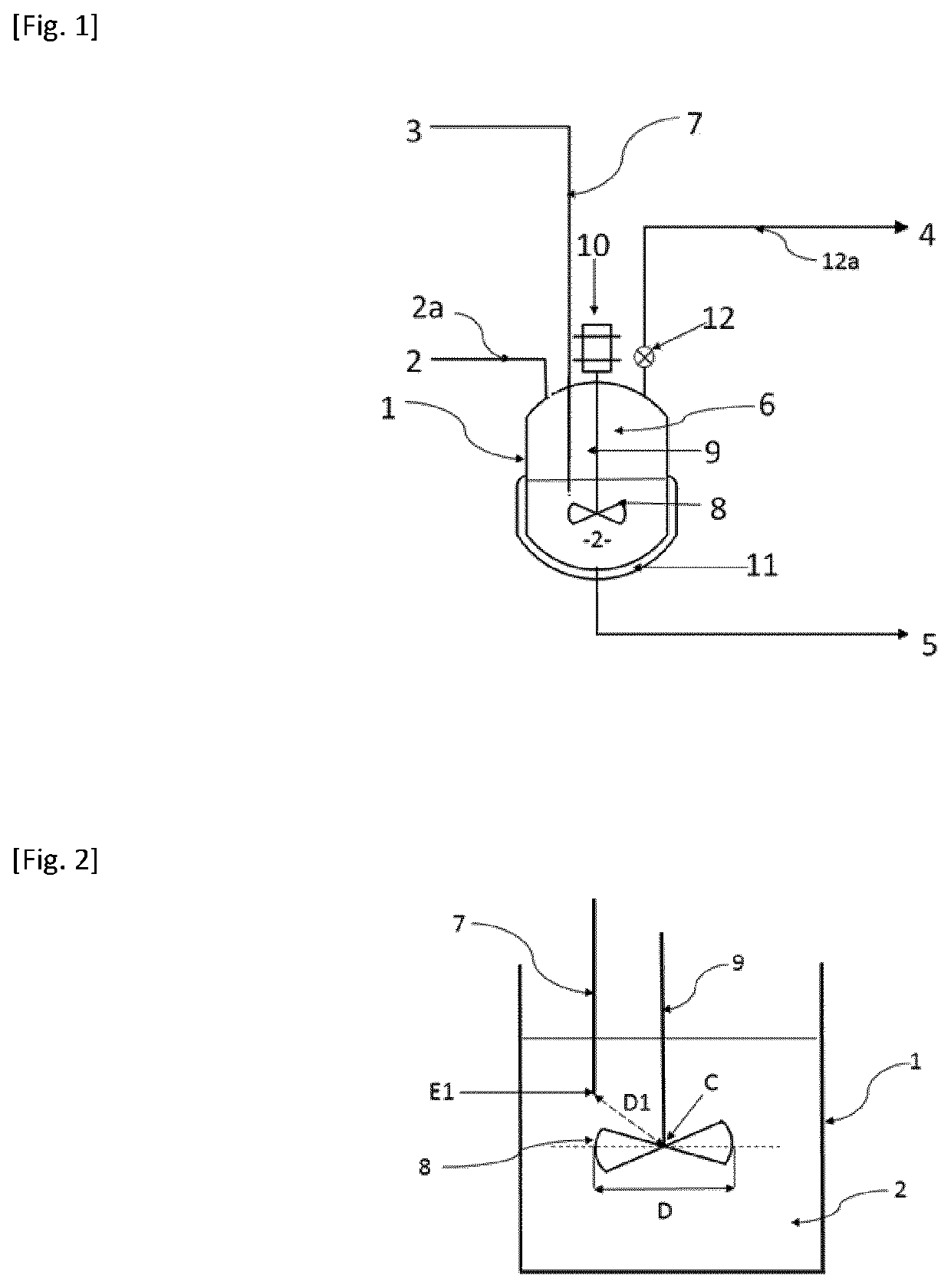Process for preparing bis(fluorosulfonyl) imide
a technology of fluorosulfonyl and imide, which is applied in the direction of chemistry apparatus and processes, electrochemical generators, nitrogen and non-metal compounds, etc., can solve the problems of low cost of synthesis process for anions, limited thermal stability, and reduced battery manufacturing costs
- Summary
- Abstract
- Description
- Claims
- Application Information
AI Technical Summary
Benefits of technology
Problems solved by technology
Method used
Image
Examples
example 1
[0077]394 g of liquid bis(chlorosulfonyl)imide (HCSl) and 19.7 g of liquid 1,4-dioxane are introduced into a stirred 1-liter reactor. The weight ratio between the 1,4-dioxane and the HCSl is 5%. The mixture is stirred using a turbine with 6 inclined blades and is brought to 40° C., prior to the introduction of the hydrofluoric acid. The reaction is carried out by regulating the temperature of the reaction medium at 40° C. and by continuously injecting gaseous HF. The gaseous HF is slowly injected directly into the liquid reaction medium by means of a dip tube. The total amount of HF injected is 110 g, which corresponds to an HF molar ratio relative to the HCSl of 3. The rate of introduction of the gaseous HF is regulated at 37 g / h. The reaction time is 3 hours. The reaction is accompanied by the formation of HCl which is continuously removed from the reactor. The gases leaving the reactor are sent to a water trap. When all the HF has been introduced, a stream of nitrogen with a flow...
example 2
[0079]397 g of liquid bis(chlorosulfonyl)imide (HCSl) and 12 g of liquid 1,4-dioxane are introduced into a stirred 1-liter reactor. The weight ratio between the 1,4-dioxane and the HCSl is 3%. The mixture is stirred using a turbine with 6 inclined blades and is brought to 45° C., prior to the introduction of the hydrofluoric acid. The reaction is carried out by regulating the temperature of the reaction medium at 45° C. and by continuously injecting gaseous HF. The gaseous HF is slowly injected directly into the liquid reaction medium by means of a dip tube. The total amount of HF introduced is 100 g, which corresponds to an HF molar ratio relative to the HCSl of 2.7.
[0080]The rate of introduction of the gaseous HF is regulated at 38 g / h. The reaction time is 2 hours and 40 minutes. The reaction is accompanied by the formation of HCl which is continuously removed from the reactor. The gases leaving the reactor are sent to a water trap. When all the HF has been introduced, a stream o...
PUM
 Login to View More
Login to View More Abstract
Description
Claims
Application Information
 Login to View More
Login to View More - R&D
- Intellectual Property
- Life Sciences
- Materials
- Tech Scout
- Unparalleled Data Quality
- Higher Quality Content
- 60% Fewer Hallucinations
Browse by: Latest US Patents, China's latest patents, Technical Efficacy Thesaurus, Application Domain, Technology Topic, Popular Technical Reports.
© 2025 PatSnap. All rights reserved.Legal|Privacy policy|Modern Slavery Act Transparency Statement|Sitemap|About US| Contact US: help@patsnap.com

